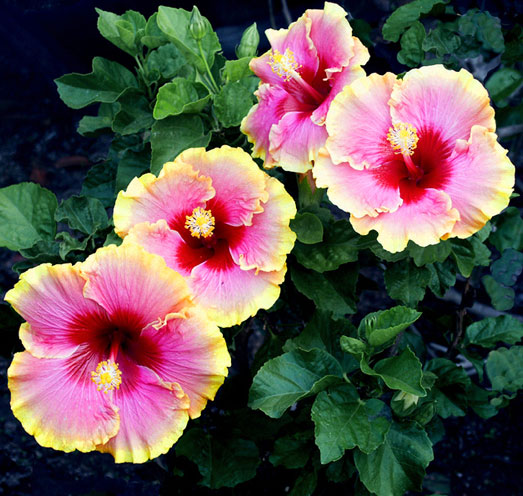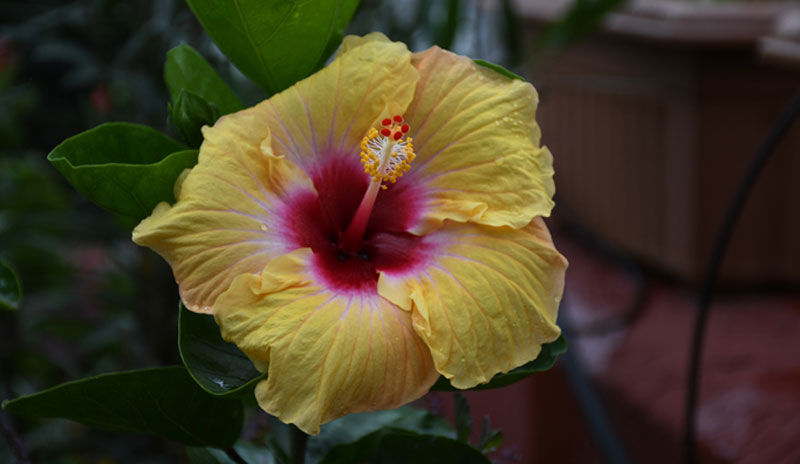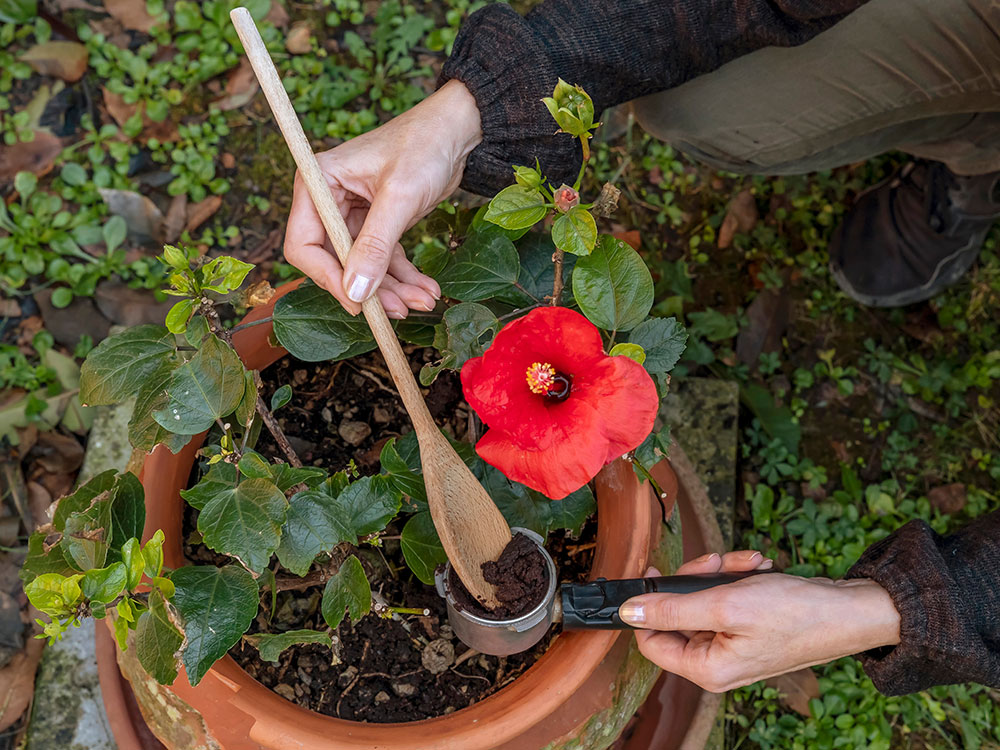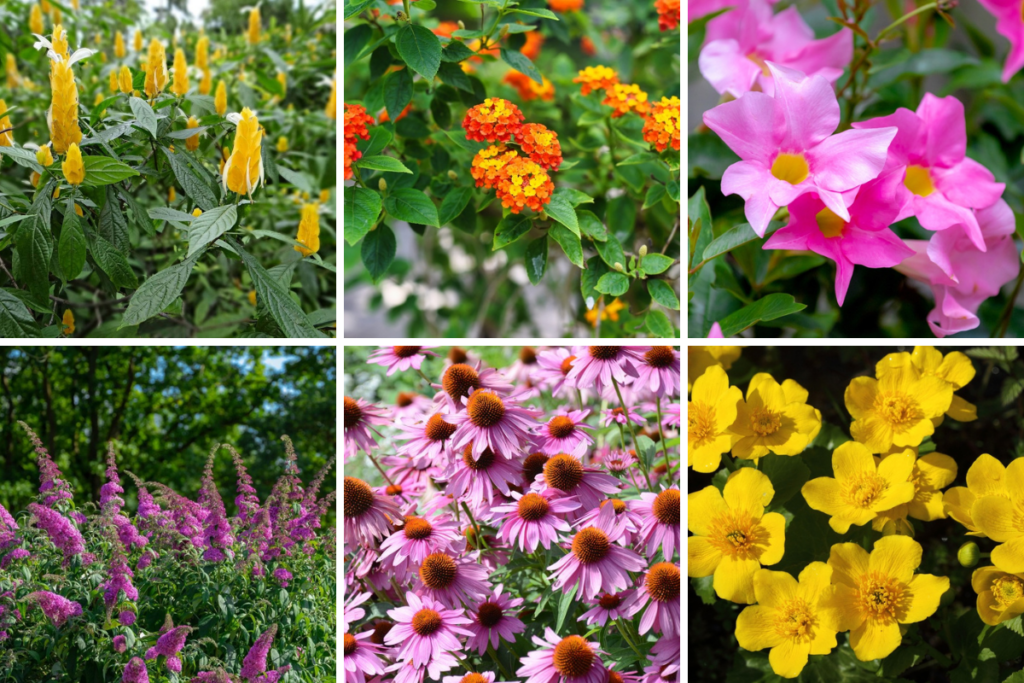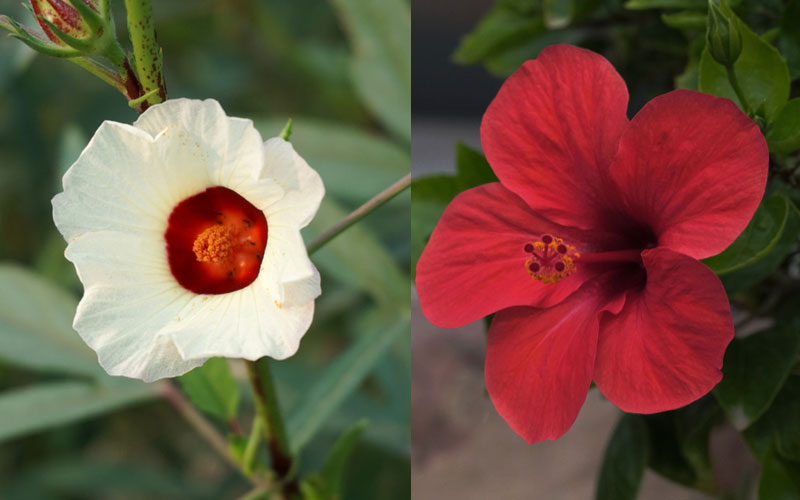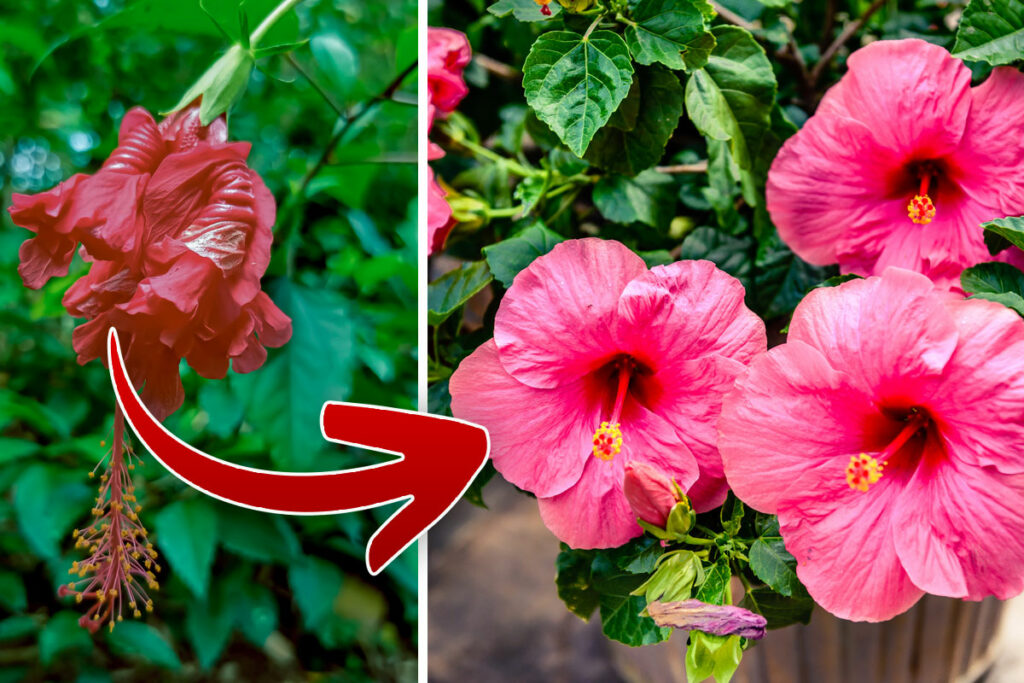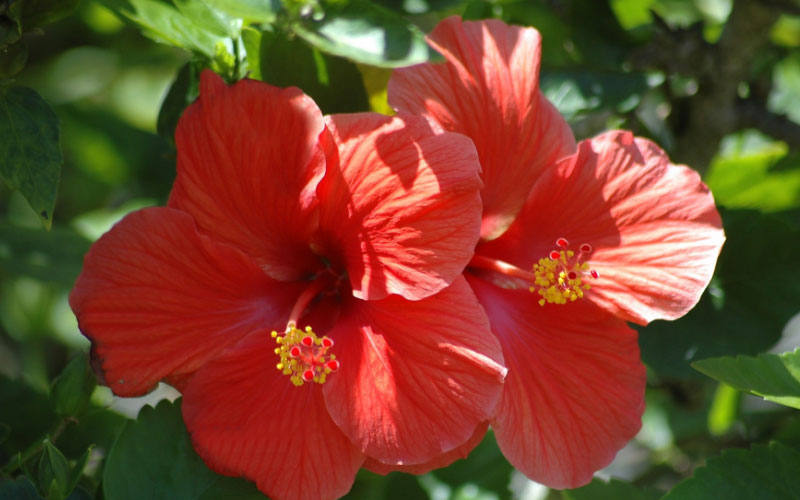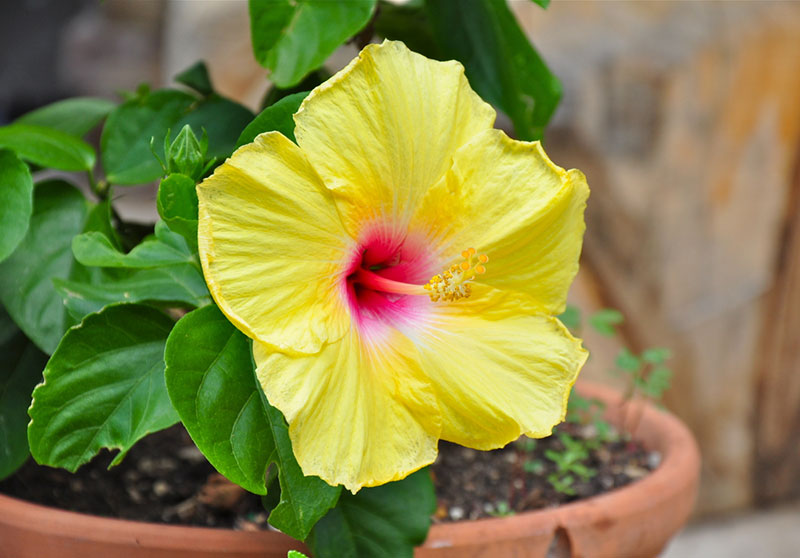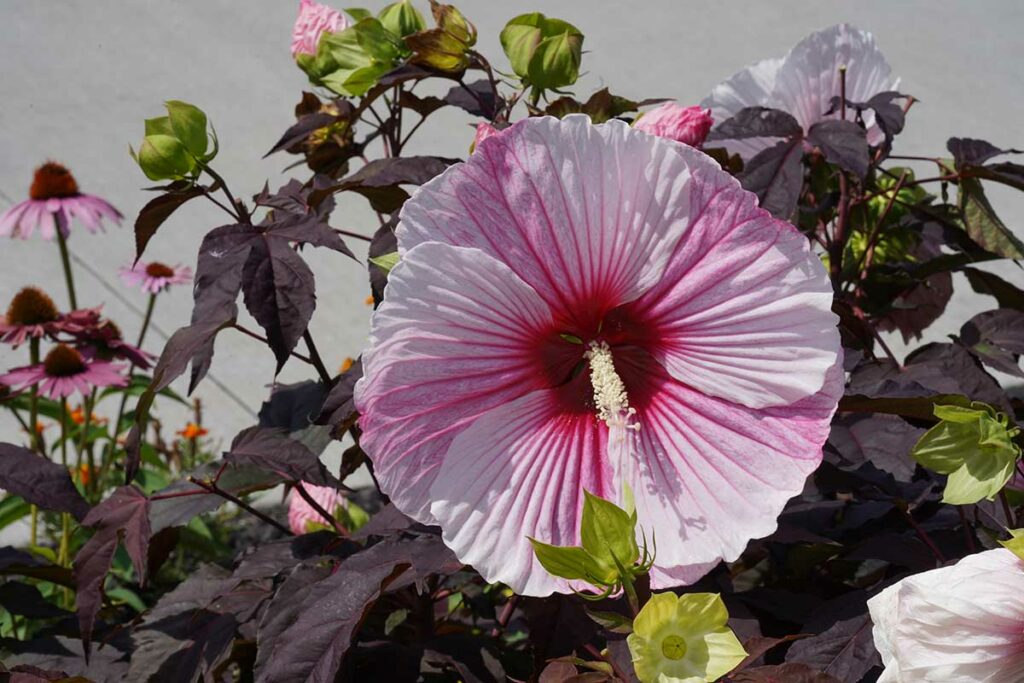
Planting hibiscus brings incredible tropical beauty to your garden.
However, this plant is prone to numerous issues you should be ready to handle. Almost every part of the hibiscus is susceptible to a disease or issue.
Still, the good news is that most of these problems are easily treatable if you detect them early.
This post will break down the 10 common problems with hibiscus trees. More importantly, we’ll provide you with solutions for each.
1. Yellowing Leaves
If your hibiscus leaves are turning yellow, it’s probably due to a lack of nutrition.
Inadequate natural light, extreme temperatures, and climate instability can also lead to this issue.
In addition, unbalanced watering and pest attacks might be the causes of the problem.
The Solution
Follow these tips to solve the problem:
- Expose the plant to sunlight throughout the day except during the afternoon.
- Ensure the soil you use for your plant is well-drained.
- Plant your hibiscus in soil with a pH level ranging between six and seven.
- Use fertilizers made especially for hibiscus.
- Protect your hibiscus from extreme hot and cold weather.
2. Leaves Fall Off
Many hibiscus plants experience a drop in their leaves each season.
Underwatering is the first reason for this issue. Lack of sunlight can also lead to the same thing. In addition, excessive heat and inadequate nutrients are other common reasons leaves drop off.
If you’ve just transplanted your hibiscus, the issue can be due to transplant shock.
The Solution
Follow these tips to solve the problem:
- When watering the plant, ensure the water reaches its roots.
- On cloudy days, monitor and move the plant to the spots that receive sunlight.
- In summer, strive to keep the plant in a location with moderate temperatures between 55 and 74°F.
- Fertilize the plant regularly according to your fertilizer’s instructions.
- If you spot any pests on your plant, use neem oil to get rid of them.
3. Dropping Flowers and Buds
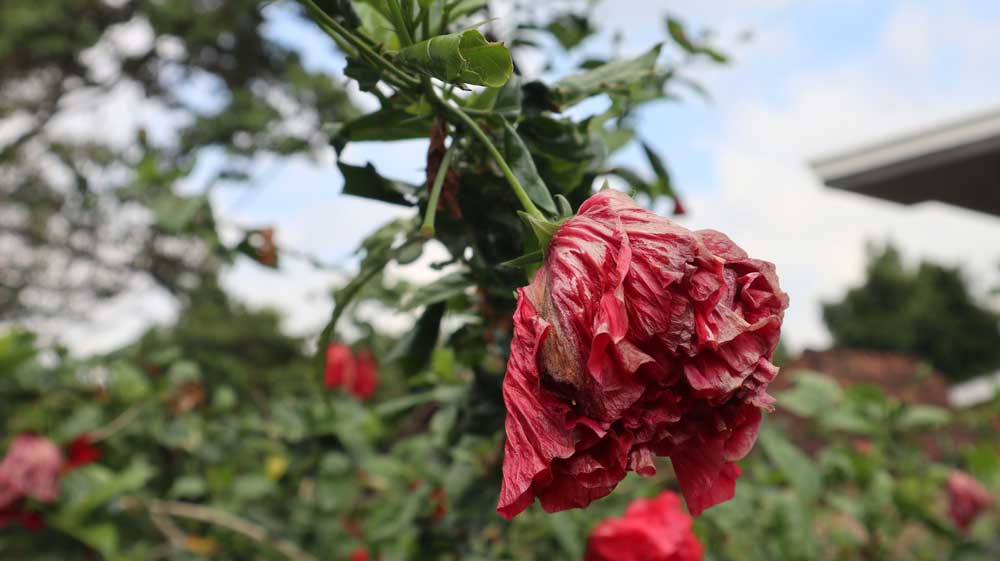
The flower and buds of your hibiscus can drop mainly because of a lack of nutrition. Another common cause is the unsuitable environmental conditions you grow the plant in.
The Solution
Follow these tips to solve the problem:
- Provide your plants with adequate water and fertilizers.
- Adhere to the fertilizers’ instructions to avoid overfeeding.
- Protect your plants as much as possible during extreme weather.
4. Root Rot
The number one reason for root rot is over-watering your hibiscus. Likewise, not providing your hibiscus with appropriate drainage can lead to the same problem.
This issue is hard to detect initially as the roots are covered. Worst still, it quickly damages the whole plant.
The Solution
Follow these tips to solve the problem:
- Ensure you’re using well-drained soil or a potting mix.
- Watch the soil for any symptoms of dampness. If there’s any, decrease the amount of water and the frequency of watering.
- If the rot is still in the beginning, prune off the infected roots and apply some fungicide to the soil before replanting the hibiscus.
5. Rust Spots
Noticing orange, yellow, or brown spots on the leaves is common in hibiscus plants. These rust-like spots are likely due to a fungal disease called hollyhock.
The main cause of this disease is the plant’s exposure to moisture for a relatively long time.
The Solutions
Apply one of these resolutions:
- If you keep your hibiscus in a crowded area with many other plants, move them apart to enhance air circulation.
- Apply a small amount of neem oil or hibiscus sulfur-rich fungicides on the infected areas.
- If the condition is severe, cut off the infected leaves and discard them away from other plant parts.
6. Powdery Mildew
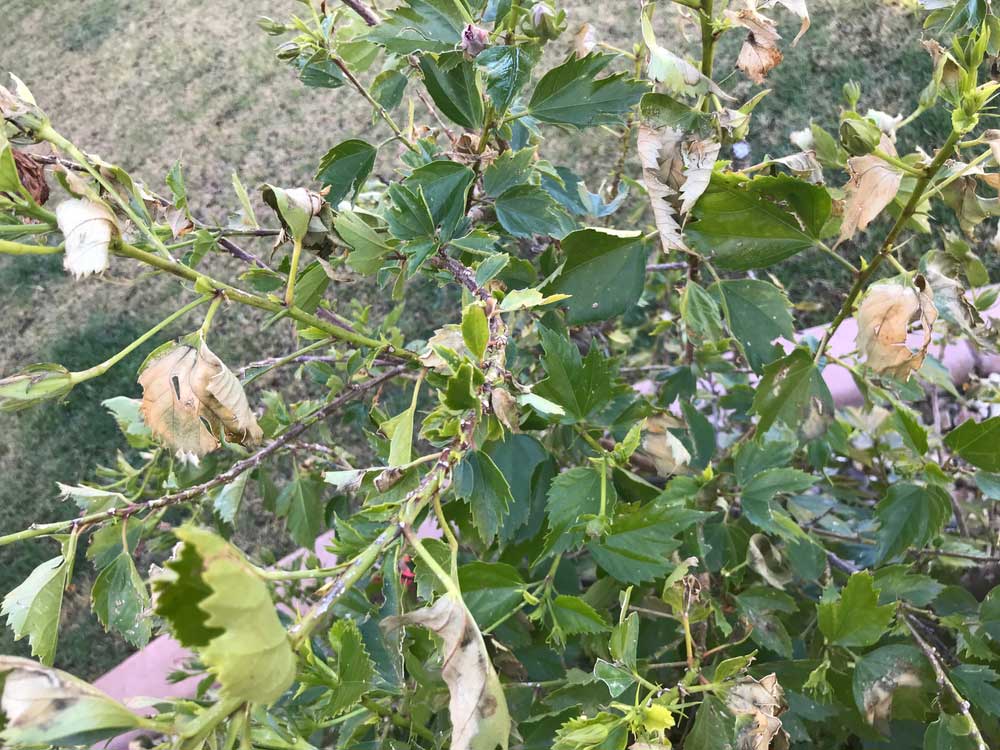
Powdery mildew is a white spot that appears on the hibiscus leaves. As the fungus spreads, this white spot can turn gray or tan over time.
These fungi can cause stunted growth or even lead to the whole plant falling apart.
The Solutions
Apply one of these resolutions:
- Mix a ratio of 2 tablespoons of neem oil with 1 gallon of water. Spray the mixture over your plant once a week until the powdery mildew disappears.
- Add a tablespoon of baking soda to 5 to 6 drops of vegetable oil. Mix them into a quart of water. Spray the mixture on the affected leaves once a week.
- Use a commercial fungicide spray that contains copper or sulfur. Follow the instructions listed on the product.
7. Aphids
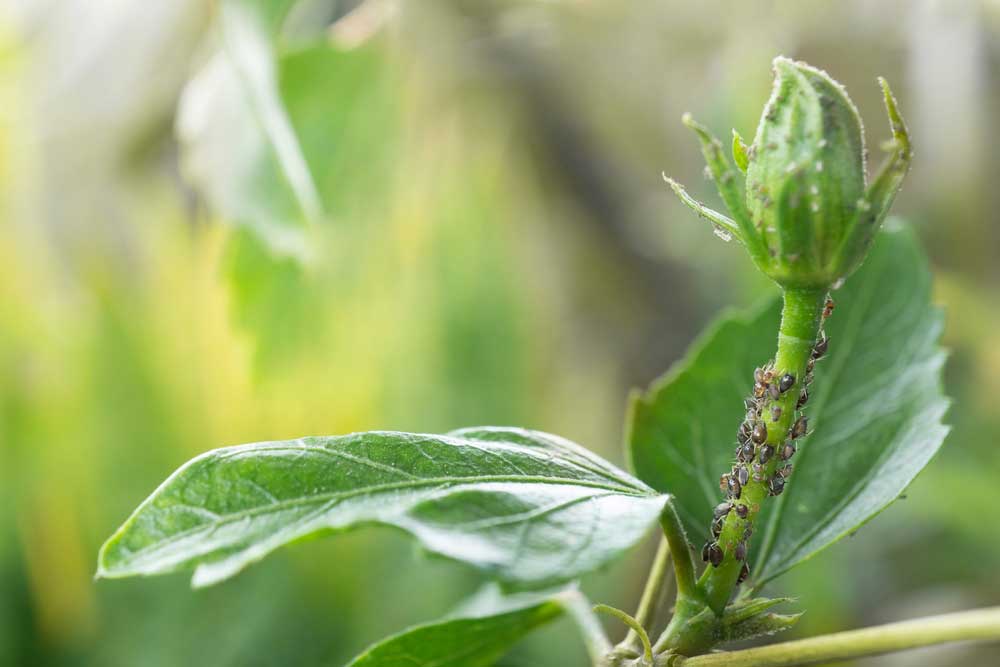
Aphids are insects that live on hibiscus leaves and feed on phloem vessels. They weaken the plant, causing it to fall eventually.
The worst thing about these insects is that they reproduce at an insanely rapid rate. You have to intervene and eliminate them as soon as you detect them.
The Solutions
Apply one of these resolutions:
- Mix a ratio of 2 tablespoons of neem oil with 1 gallon of water and spray the infected areas.
- Apply a mild concentration of insecticidal soap on the plant.
- Cut off the heavily infested leaves and dispose of them.
- Use systemic pesticides.
8. Mealybugs
Mealybugs are tiny insects that reside on hibiscus plants and feed on their sap. This prevents the plants from blooming and deteriorates their health.
The Solutions
Apply one of these resolutions:
- Soak a cotton swab in isopropyl alcohol and wipe the infected parts of the plant with it.
- Spray your hibiscus with a weak concentrated insecticidal soap. Use one tablespoon of soap per gallon of water.
- If the infection is severe, you may need synthetic chemical pesticides.
9. Spider Mites
Spider mites are various types of spiders that feed on hibiscus. They’re tiny insects that reproduce at an incredibly rapid rate.
So, they can completely colonize your hibiscus in a few days if you don’t intervene.
The Solutions
Apply one of these resolutions:
- Give them a soft blast with your garden hose to remove them from the plant.
- If the condition is severe, use insecticidal soaps to eliminate them.
10. Thrips Attacks
Thrips are tiny, slender insects that feed on the hibiscus during its growth phase. They live and lay eggs on hibiscus buds.
However, they’re hard to detect because of their tiny size, but you can spot them using a magnifying glass.
The Solutions
Apply one of these resolutions:
- Spray mild concentration of neem oil over the infected areas.
- If the condition is severe, insecticidal soaps and sprays are the best solutions.
- Cut off infected leaves and buds.
Wrap Up
The 10 common problems with hibiscus plants are easily treatable. If you follow the above solutions, you’ll get over all your hibiscus issues.
In addition, provide your plant with the required water and nutrition all year to boost its health. That way, it’ll be less prone to any problem.





